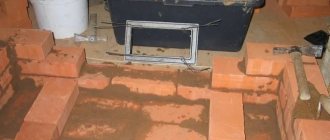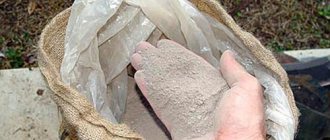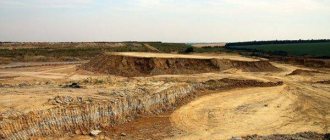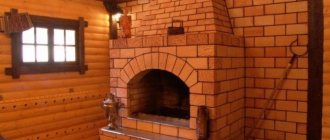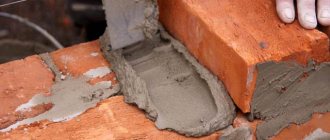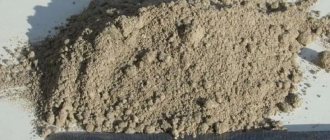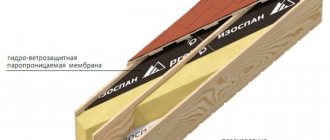Clay is a natural material formed through natural gravity; its characteristics depend on the components included in its composition. For the construction of objects that are operated under the influence of strong heat and open flame, a special type of this material is chosen. Fireclay is also called fireclay. To produce it, zircon or corundum silicate or alumina are used. The raw materials are placed in a drum or oven and fired at a temperature of +1500 degrees C. This way, water and impurities are evaporated, and the material is sintered into crumbs, the diameter of which varies from 0.5 to 2.5 mm. This technology creates high heat-resistant and fire-resistant qualities of fireclay.
Important! There are several types of fireclay. The quality of a particular material depends on the raw materials, firing technology, and additives. Some types of fireclay are used for the production of bricks, others are used to prepare plaster solutions for heating appliances, and others are used for sculpting and casting sculptures and dishes.
Advantages of refractory
Heat-resistant, fire-resistant fireclay clay has been known to man for several thousand years. Since then, its scope has changed little. Among other natural materials with the same properties, this refractory was chosen due to the following advantages:
- coatings and products made from it do not collapse, do not crack, retain their original shape, and are characterized by a long service life;
- environmentally friendly natural sedimentary rock does not harm human health and the environment;
- clay has high adhesive qualities, it adheres perfectly to metal, stone, brick and other surfaces;
- products and coatings are able to withstand heat stably and for a long time;
- the material is vapor permeable.
Varieties
How to fire clay
As a rule, clay is fired at home in a homemade oven. In this case, the temperature regime must be monitored on an ongoing basis. It will look like this:
- We start from the first position of the switch, hold it for 5 minutes and turn it off.
- After 5 minutes, turn it on, leave the clay to bake for 10 minutes and turn it off.
- After 15 minutes, turn it on, wait again for 10 minutes and turn it off.
- At this stage, turn on the oven and let the clay burn until the products turn red.
- Here we turn the switch to the second position and follow the same pattern: 5-5 minutes, 10-10 minutes, 15-10 minutes. Moreover, here you do not need to turn off the stove, but only go down from position 2 to 1 and back.
- Position 3 is applicable if the oven power is not enough.
On average, the entire clay firing process takes up to 6 hours. You can determine “readiness” by the glow of the walls inside the oven. As soon as the glow turns light yellow, turn off the oven.
Do not immediately open the door; leave the products to cool in the oven for a long time, for example, overnight. This will allow it to cool evenly after firing. Then you can cover them with glaze and let them dry, so your creation will last you much longer.
Disadvantages of refractory
Like any material, refractory clay has not only advantages, but also disadvantages:
- the material has a high price;
- The preparation of the solution is carried out strictly according to technology.
On a note! In large chain construction stores, such as Leroy Merlin or Your House, you can purchase fireclay clay at a more affordable price. There it is usually sold in 20 kg bags. The second option to save on the purchase of raw materials is to contact the sales department of the building material manufacturer itself. Also, the cost will be significantly lower when purchasing a large batch in bulk.
Other products
Fireclay is a durable material that is especially loved by designers. They are attracted by its beauty, as well as its special texture. Many craftsmen make clay figurines, as well as various dishes. Such products can decorate even the most sophisticated interior.
All these advantages are achieved by adding special impurities to the clay. This allows you to give the material high ductility. Also, many craftsmen fell in love with this material because of its environmental friendliness. It is impossible to find harmful substances in fireclay clay.
To figure out how to make fireproof clay, you will need to know the recipe and the ratio of the elements of the finished mixture. When making artistic ceramics, it is necessary to take plastic clay of various compositions. Then fireclay chips are added to it. It usually has a concentration of 40%.
Before making crafts from fireclay clay, the master will need to make a sketch. After this, the master makes a mold and fills it with fireclay clay. After this, the material is left to dry. The product must be kept for a long time. This will allow it to acquire a certain shape and become durable.
Composition of fireclay refractory
In stores, fireclay is sold as a dry mixture in bags. It is produced from raw materials with a high content of highly dispersed hydroaluminosilicates. In addition to these components, refractory clay contains:
- Na sodium;
- Ca calcium oxides;
- K potassium;
- Fe iron;
- Mg magnesium;
- aluminum oxides and other components depending on the type of raw material.
When purchasing, you need to pay attention not only to the composition, but also to the expiration date. Kaolin, which is part of the building material, loses its properties over time. Expired goods cannot be used.
Attention! When choosing refractory clay for work, pay attention to mortar. This is a combination of numbers in the marking. The higher the values, the more pronounced the fireproof qualities of the materials are. Other symbols and letters may vary. As a rule, the instructions on the packaging indicate the scope of application, down to the type of bricks that can be laid.
The composition and instructions for use are printed on the packaging
Basic properties of fire-resistant building materials
When choosing a material for a specific job, you need to pay attention to its technical characteristics:
- grain sizes;
- firing temperature: at lower rates, fireclay absorbs up to 25% of moisture, at higher rates – up to 10%;
- humidity indicators, high-quality refractory should not contain more than 5%;
- temperature limit of the building material, the maximum limit is +1850 degrees C.
Note! To ensure that the dry mixture does not lose its technical characteristics, it must be stored under special conditions. The main danger to building materials is humid air. The second risk factor is long-term storage. Mostly, the shelf life of clay refractory is 36 months.
Fireplace made of fireclay bricks and fireproof clay mortar
Scope of application
Fireclay can be used alone or mixed into plaster solutions. Fireclay is not only thermally resistant, but has deep brown and brown shades and an impressive texture. Aesthetic qualities significantly expand the scope of application of the material:
- production of construction refractories;
- interior design using fireclay plaster;
- casting and sculpting of souvenirs, dishes, figurines;
- preparation of solutions for the construction of stoves and fireplaces;
- for the formation of heat-insulating screens.
For designers, sculptors, craftsmen, and decorators, refractory clay opens up endless possibilities. You can add various fillers and dyes to it. The plastic material can take on the most intricate shapes. The spectacular texture brings an element of uniqueness. In construction and renovation, fireclay is characterized by local use.
Important! The names of the material in the packaging may be different: VITEB, PGA, PHB. They are produced according to different specifications. It is important to carefully study the instructions themselves.
Decorating the walls of premises with fireclay plaster
Clay crafting
If you want to use clay without firing, then you need to choose it with polymer additives.
Before you start sculpting, you need to knead the polymer clay thoroughly with your hands and tap it with your palms. These manipulations will release excess air from the material. This is necessary if you still decide to fire (but not necessarily). It is more convenient to shape the product by working with both hands, starting with larger objects and ending with the smallest ones. A stack will come to your aid; it is a sculpting tool. When the work is completed, wipe the product with a damp sponge or brush.
The process of mixing the solution
Preparing mortars for laying stoves and fireplaces, and plaster for decorating premises is in many ways similar to mixing conventional compounds. Application to the surface is also carried out using the same tools, namely two spatulas: with one tool the solution is placed on the surface and leveled, with the other to remove smudges. Other recipes are used to produce building ceramics and modeling compounds. But the general principle is this:
- the contents of the package are poured into the container;
- the powder is filled with a certain amount of water;
- swelling of the powder continues for 3 days;
- on the 4th day water is added, in some cases sand, in others additives;
- the mixture is stirred until smooth.
Attention! No matter how homogeneous the material may be as a result, when performing work it must be constantly mixed, not allowing the components to be distributed according to density. The quality of work largely depends on this.
Mixing the solution
Use Cases
Kaolin can be used for furnace masonry. It is also used as plaster and for making decorative items.
In addition to being used for decorative purposes, chamotte clay is actively used when laying stoves and fireplaces
When building stoves, they look at the markings applied to the surface of the products. Usually the letter "Ш" is indicated. The material most often used is for masonry of the firebox, since its cost is high, so it is impractical to use it for the rest of the work. They lay it on special clay. Its characteristics are the same as those of brick.
For use in plaster, large and medium spatulas are used. It is necessary to apply the material in a layer of no more than 2 mm. As soon as it dries, you can begin finishing work.
Fireclay fireclay has a unique texture and composition. That is why designers paid attention to it and began to use it to produce unique blanks. These can be ceramic dishes, original figurines. To ensure greater plasticity, various impurities are added. The finished products look beautiful, and they are absolutely safe. Most often, fireclay chips are used as additives in the production of decorative objects. It is added to plastic clay.
Mortar for laying fireplaces and stoves
Before starting work, you need to decide which part of the heating device you will fold at one time. You need to cook a strictly defined portion. Calculations are made as follows. Each brick requires approximately 1 kilogram of mortar. Therefore, to lay 30 bricks you will need to mix the mixture from a standard 2 kg bag. If 1 cubic meter is used at a time, 5 packages will be required. The work is carried out according to a standard scheme using quartz sand. The proportion of clay and sand for a large oven is one to three, respectively, for a small hearth – one to two. If you are using a ready-made product from a store, quartz filler will not be required. Process Features:
- sand and clay or the finished product is poured into a container;
- water is also added there, it saturates the powder, when it is completely wet, another liquid is added, its surface should be at a distance of one phalanx of a finger from the wet mixture;
- the mixture settles for up to 3 days;
- on the 4th, stir the solution with a construction mixer until homemade sour cream becomes thick; if it is dry, add water; if liquid, add powder;
- Having achieved the desired density and uniformity, you can begin work.
The technology of laying on fireclay clay does not differ from the usual technique. Experienced masters of masonry heating devices recommend making seams no thicker than 1 centimeter. The structure must dry completely, this will last from 2 days depending on the temperature and humidity. Experienced craftsmen believe that a folded stove contains at least one barrel of water. To completely evaporate it, after the outer layer has dried, the device needs to be heated little by little 2 times a day with a small armful of firewood. In summer, this procedure lasts from 5 to 10 days, in winter – up to three weeks. Until the stove is completely dry, you cannot heat it to heat the premises. It is also worth understanding that heating structures are not only a source of comfort in the home, but also danger. If the master is not confident in his knowledge, it is better to use the services of professionals.
Construction of furnaces
Features of stove plaster repair
There are several reasons for the formation of cracks on the surface:
- Incorrect masonry, due to which the structure heats up unevenly in places. This will require radical repairs - refurbishment of the stove.
- Using ordinary plaster that is not fire resistant. You will have to replace the coating with a heat-resistant one. An alternative is to add fireclay powder to the clay solution.
- The doors were loose. Reinstall with metal mesh reinforcement.
- Failure to comply with plastering technology.
If minor repairs are required without completely replacing the entire coating, then the work order is as follows:
- We clean the layer of whitewash or paint.
- We remove the cracked part of the plaster with a chisel to the brickwork.
- We remove all excess with a metal brush.
- We prime the area. An alternative to primer is cement diluted in water with a liquid consistency.
- Mix the solution. It is better to choose the same composition as was used previously.
- Apply the solution in small portions onto the moistened area.
- Let it set a little and rub it in.
- To secure doors that are loose, take them out. We clear the area from falling pieces of mortar.
- We make new holes for fasteners. For reinforcement, we wall up pieces of wire.
- We wrap the door frame with asbestos cord and put it in place, securely fixing it with wire.
- The clay mixture is applied.
- The treated areas are rubbed and polished.
The procedure for preparing chamotte plaster for finishing and decoration
The plaster is prepared a little differently:
- refractory and sand are poured into the container in a ratio of two to seven, respectively, only fine-grained sand is used, the proportion is strictly maintained, otherwise there is a risk of cracking;
- the powder is poured with water and left for three days;
- Portland cement is poured into the swollen solution in a proportion of one to two parts of clay;
- stir the material with a construction mixer.
It is important to use the entire volume of plaster within the shortest possible time. Further, the solution loses its technological qualities. If work is planned for several days in a row, then a new portion of plaster is prepared every day. In addition to the above ingredients, you can use others:
- the addition of PVA glue will ensure eradicated drying; under natural conditions, the finishing layer based on fireclay releases moisture within two days;
- liquid fiberglass will provide additional plasticity to the mass and strength;
- Rock salt will add strength and speed up drying.
Interior decoration with fireclay refractory in retro style
Mortar for designer ceramics
The production of ceramics from refractory clay can be done in two ways: with firing and without this process. But work begins with preparing the solution:
- fireclay and ordinary clay are placed in the container in a ratio of six to four, respectively;
- materials are filled with water and left for several days;
- the solution is thoroughly mixed with a mixer to a thick consistency - for castings;
- the material is poured into molds and dries for several days, depending on the size and geometry; PVA glue can be used to speed it up;
- the frozen mass is removed from the mold and modified according to the design.
For sculpture, a mixture of a thicker consistency is mixed so that it can be fixed to the frame. Adding liquid glass at 3% of the total volume will simplify the work. If firing is planned, it is performed no less than two days after finishing decoration. The temperature should not exceed +1320 degrees C, after which the melting stage begins.
Garden decor made of fireproof clay
The procedure for preparing a clay solution for work can be seen in this video:
Polymer clay as a source of inspiration
When using polymer clay, firing is not a necessary process, but it creates a stunning effect of realism of the object. It looks very impressive.
Firing polymer clay can be carried out in an oven with a thermostat or on a homemade stove. But the most convenient way is the air fryer. When creating flowers, an air fryer is not suitable, as they will become thin. They require a temperature in the range from 110 to 130 degrees.
This means that none of the proposed methods work. Therefore, it is better to fire clay for flowers in glass containers.

